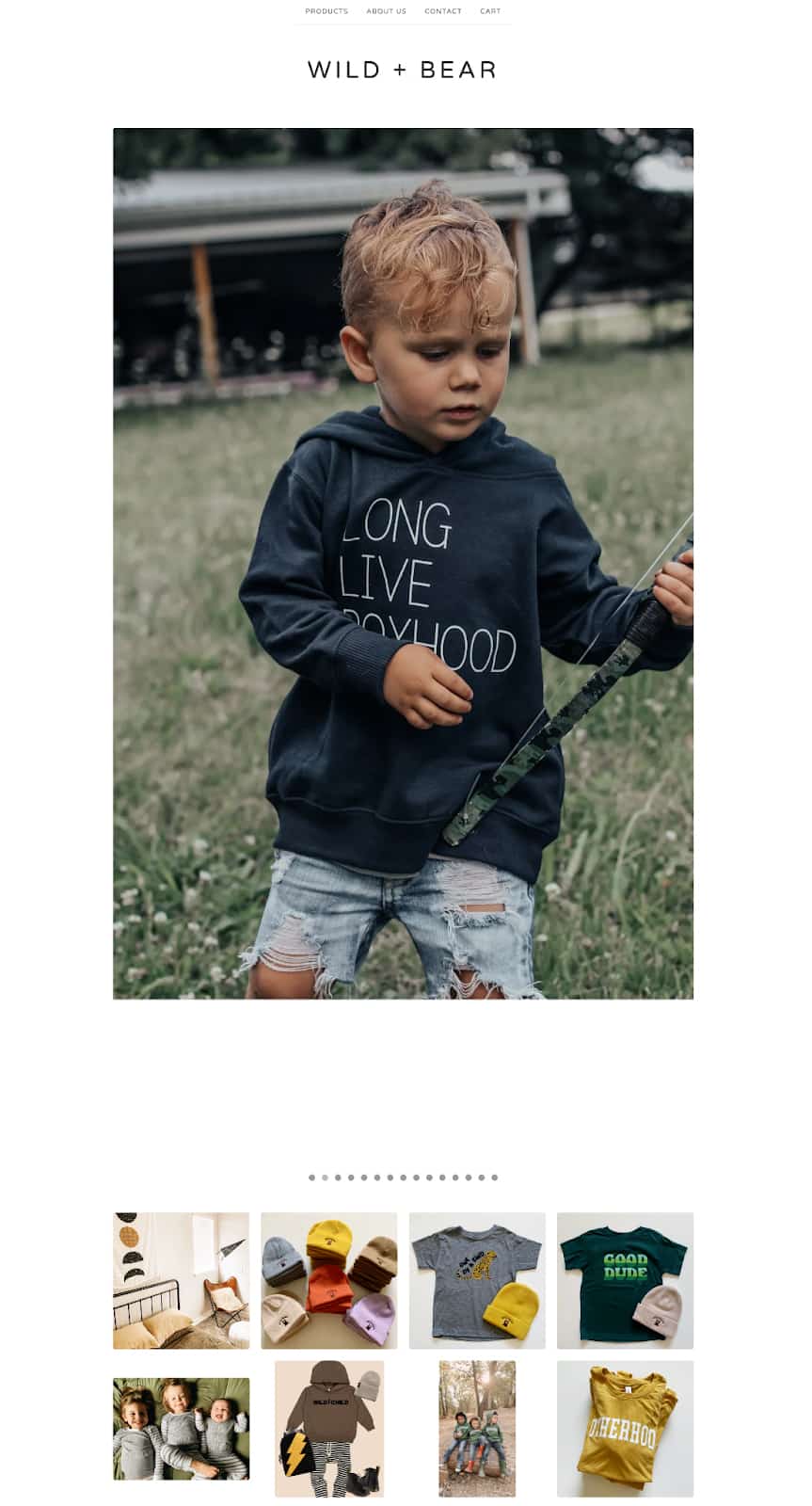My Big Cartel review discusses the ecommerce web builder’s pricing, site builder, sales and product features, and ease of use in detail. Its simple platform with aesthetically pleasing templates earned high scores from my evaluation. However, product limitations and a lack of advanced inventory tracking hindered it from getting a higher score.
Big Cartel scored 3.28 out of 5 during my evaluation of the best ecommerce platforms. While it did not make the final ranking, Big Cartel is included in my recommended free ecommerce platforms because it allows you to connect to a custom domain.
Big Cartel Overview

Pros
- Easy to use
- Low monthly cost
- Stylish themes with no ads or branding
Cons
- Not scalable, only has basic features
- Limited integrations and payment providers
- Weak search engine optimization (SEO) features
Deciding Factors
Supported Business Types | Ecommerce, physical goods, subscriptions (beta), dropshipping |
Standout Features |
|
Monthly Software Fees | Affordable; forever-free plan available Paid plans range from $9.99–$19.99 No trial for paid plans, upgrade is needed from free plan |
Payment Gateways | Limited PayPal and Stripe |
Payment Processing Fees | Standard Rates, No Transaction Fees 2.9% + 30 cents for payment providers; zero transaction fees |
Contract Length | Month-to-month |
Customer Support | Limited Email support, Monday–Friday, 8 a.m.–6 p.m. Eastern time |
Is Big Cartel Right for You?
Big Cartel earned a spot in my list of the best free ecommerce platforms. It’s one of the few free self-hosted ecommerce platforms I reviewed that allows you to connect to a custom domain. Its simple platform with aesthetically pleasing templates contributed to its high marks.
However, product limitations (the free plan only allows for five products) and lack of advanced inventory tracking (no SKU management) hindered it from getting a higher score.
When to Use Big Cartel
- Artists and creatives selling custom, handmade, or limited edition products: Big Cartel was made with artists in mind. Its stylish templates are developed for showcasing aesthetically pleasing product photos.
- Businesses with no immediate plans to scale: If you do not have any plans of scaling your business soon and intend to sell only a handful of products each month, Big Cartel’s free plan is for you. You can sell up to five products with the free plan.
When to Use an Alternative
- If you want a full-blown ecommerce website that can grow with your business, Shopify is what you need. It is a platform that is ideal for new businesses but has room for growth and scalability. Shopify also allows you to build a full website on its platform.
- If you run a brick-and-mortar store and would like to add an online component for pickup or local delivery sales, then Square Online is your best option. It lets you build a full website or a simple one-page site for free and offers a complete POS for your brick-and-mortar store.
- If you have a high-revenue business or an extensive product catalog, BigCommerce is a better fit. You can choose your payment processor with no added fees, and it can host an unlimited number of products—physical, digital, or services.
Big Cartel Alternatives
Best For | Monthly Fee Starts at: | Learn More | |
|---|---|---|---|
 | Small businesses with ecommerce as their backbone and multichannel retailers | $39 for a full-blown standalone store, $5 for a store landing page and social media checkout links | |
 | Small storefronts wanting to add an online store | $0 | |
 | Artists and creators wanting top-rated templates | $33 | |
Our Comparisons of Big Cartel vs Other Software
Looking for more options? Read our guide to the best ecommerce platforms and leading free ecommerce website builders for small businesses to find a service or software that’s right for you.
Big Cartel Reviews From Users
There are not many BigCartel reviews available online. The reviews we have read were mostly positive, though, with most users commenting on how the free plan allows them to have a basic store. They also said that its pricing plans are affordable. Common negative feedback, meanwhile, is that it lacks features for scaling—such as advanced inventory capabilities and customization.
At the time of publication, Big Cartel reviews earned the following scores from other critics and user review sites:
- G21: 4.2 out of 5 based on more than 25 reviews
- Website Builder Expert2 gave it a 3.0 out of 5 rating in its review
- App Store (iOS)3: 4.8 out of 5 stars based on nearly 7,000 reviews
- Google Play (Android)4: 3.4 out of 5 stars based on more than 120 reviews
When reading through Big Cartel reviews, I noticed these trends:
| Users Like | Users Don’t Like |
|---|---|
| Seamless website and mobile app integration | Lacks advanced features |
| Affordable paid tiers | No flexibility for customization |
| Easy to learn, quick setup | Very few integrations available |
Big Cartel Pricing & Payments
My Expert Take
Big Cartel won’t give you the best value for money if you’re looking to grow your online store. However, this is an excellent option if you plan to keep it small and stay that way. You can use its free plan and start selling online right away.
While Big Cartel provides a forever-free plan, its product limits and limited payment providers prevented it from getting a higher score.
While Big Cartel’s pricing may appear affordable, the features included in each plan remain basic, limited, and aren’t very scalable. When you upgrade, you get an increase only in the number of products you can sell—you don’t get more advanced features to support your business.
Take, for example, Shopify’s $39 per month plan, which lets you sell unlimited products. Compare this to Big Cartel’s highest tier, at $19.99 per month, which has a 500-product limit. You also get more marketing options, better SEO features, and payment channels with the former.
Big Cartel Pricing Plans
In addition to the free plan, Big Cartel has two paid plans, at $9.99/month and $19.99/month respectively. All plans allow you to build your online store with customizable themes, sell online and in person, use a custom domain, perform shipment tracking, and offer discounts or promos. The main differences between the tiers are product limits, inventory tracking, bulk editing, product option groups, and the ability to install Google Analytics.
Big Cartel Plans | Gold | Platinum | Diamond |
|---|---|---|---|
Monthly fees | $0 | $9.99 | $19.99 |
Number of products | 5 | 50 | 500 |
Images per product | 1 | 5 | 5 |
Use custom domain name | ✓ | ✓ | ✓ |
Inventory and shipment tracking | N/A | ✓ | ✓ |
Big Cartel’s free plan (Gold) is free and allows you to sell up to five products with one photo per item. It also lets you connect a custom domain, such as www.yourstore.com. If you don’t own a custom domain, you can use a Big Cartel subdomain, like yourstore.BigCartel.com, for free.
You integrate a small but mighty set of apps, including Mailchimp, ShipStation, and live chat. You’d want to upgrade to the paid versions if you need to sell more products and include digital items, like e-books and videos.
Big Cartel’s paid subscriptions, Platinum and Diamond, essentially have the same functionalities except for the number of products you can sell. Apart from what’s listed above, you can edit theme codes, offer discount codes, use inventory tracking, and do product option groups.
Payment Providers
Big Cartel offers the following payment integrations: Stripe, PayPal, and Apple Pay. Google Pay is automatically turned on when you integrate with Stripe, and you can activate Buy Now, Pay Later options and accept sales in person through Stripe as well.
It doesn’t add any fees on top of whatever these providers charge.
Read our Stripe vs PayPal comparison to choose the right one for your business.
Big Cartel New Features
Big Cartel rolled out these new features and enhancements in 2023:
- Big Cartel has expanded payment options by offering BNPL options like Afterpay through Stripe.
- Big Cartel also expanded its international payment options and streamlined its checkout process.
- Big Cartel made it easy to add integration code into site pages. For example, Big Cartel users can create a “subscribe to newsletter” box in their checkout flow that automatically adds customers to their Mailchimp mailing list.
Big Cartel Site Builder & Maintenance Features
My Expert Take
I gave Big Cartel’s website builder and maintenance features a score of 3.25 out 5 during my evaluation. While it received high marks for its beautiful templates and design functionality, it lost points because of limited customization options and weak to non-existent SEO tools.
Website Templates
The platform was clearly created with the artist in mind by the design of its website templates—they are stylish and modern and, unlike many competitors, don’t include pesky ads. There’s just a subtle logo on the footer, which you can remove using code.
As of this writing, Big Cartel has 18 themes, all minimally designed and focusing on visual appeal. Users can edit CSS files for the themes; however, if you wish to change some HTML coding, you need to upgrade to a paid subscription.
Compared to other platforms I have evaluated, Big Cartel’s template offering is pretty small. For context, top ecommerce platforms Shopify and BigCommerce have more than 100 templates, although most of them are paid. Wix and Squarespace also offer more than a hundred, and these are all free.
What I like about Big Cartel’s templates is that all of them are free, mobile-responsive, and offer variety. Most of the templates lean heavily on good-quality photos, so ensure you take great product photos.
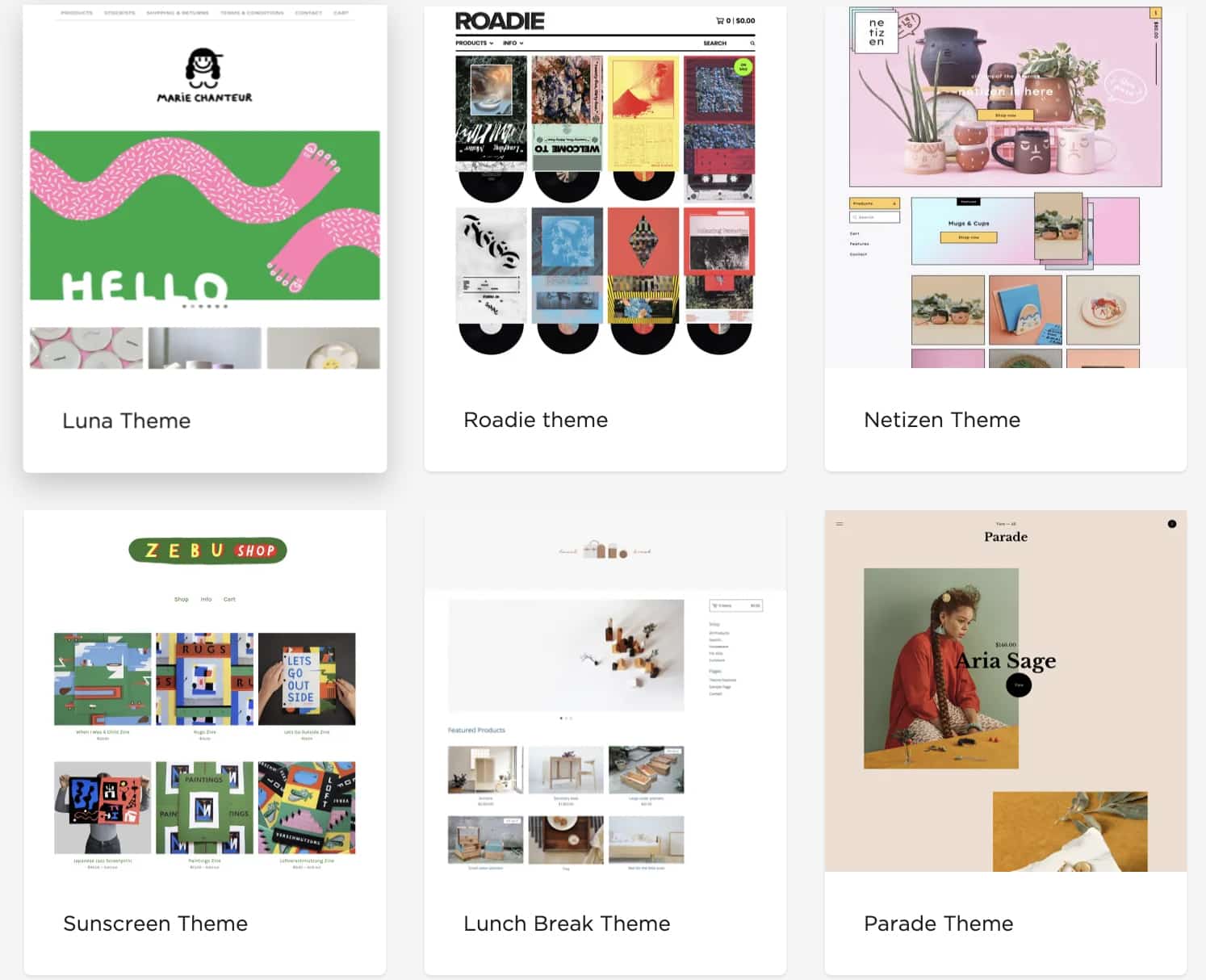
A few examples of Big Cartel’s available website templates (Source: Big Cartel)
Website Builder & Editor
Big Cartel’s website builder is intuitive, pretty much because you are very limited to what you can do with your chosen template. The website editor also isn’t accessible in the main menu of your dashboard. When I was building a demo store, I had to go to my Account, scroll down to Shop, and click on a barely noticeable button called Design to launch the editor.
It was just a few clicks, but compared to other website builders I have tried and tested, Big Cartel’s navigation for an often-used platform feature (site editor) is not that intuitive.
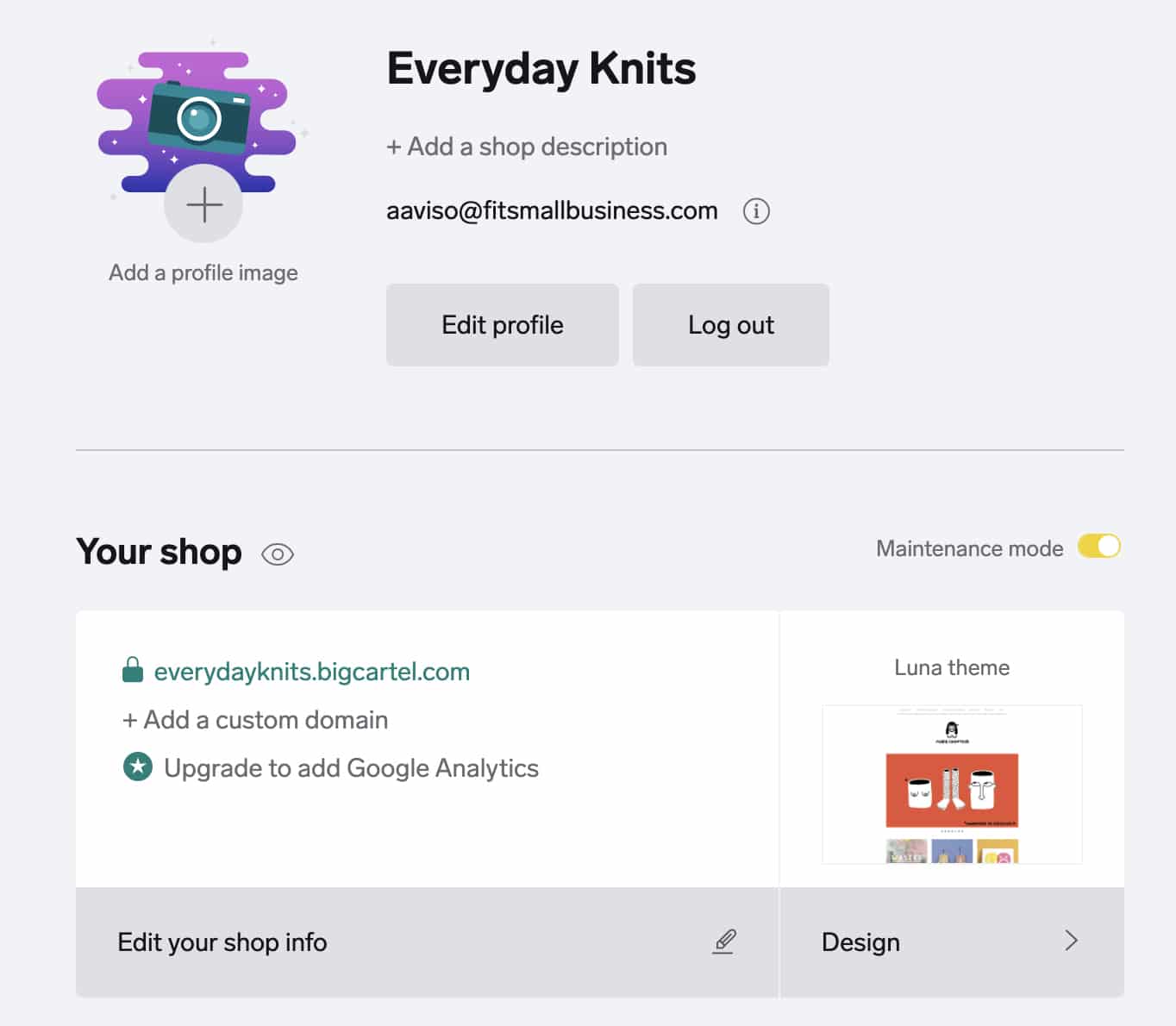
To edit your Big Cartel website, click on your Account icon in the top right corner of your navigation menu. Scroll down the Your Shop area and click on Design.
You can easily switch previews to see what your website looks like on desktop, mobile, and table. However, there aren’t a lot of sections you can add to the homepage—you can only add a logo and background image, customize fonts and colors, and adjust layout settings for your products.
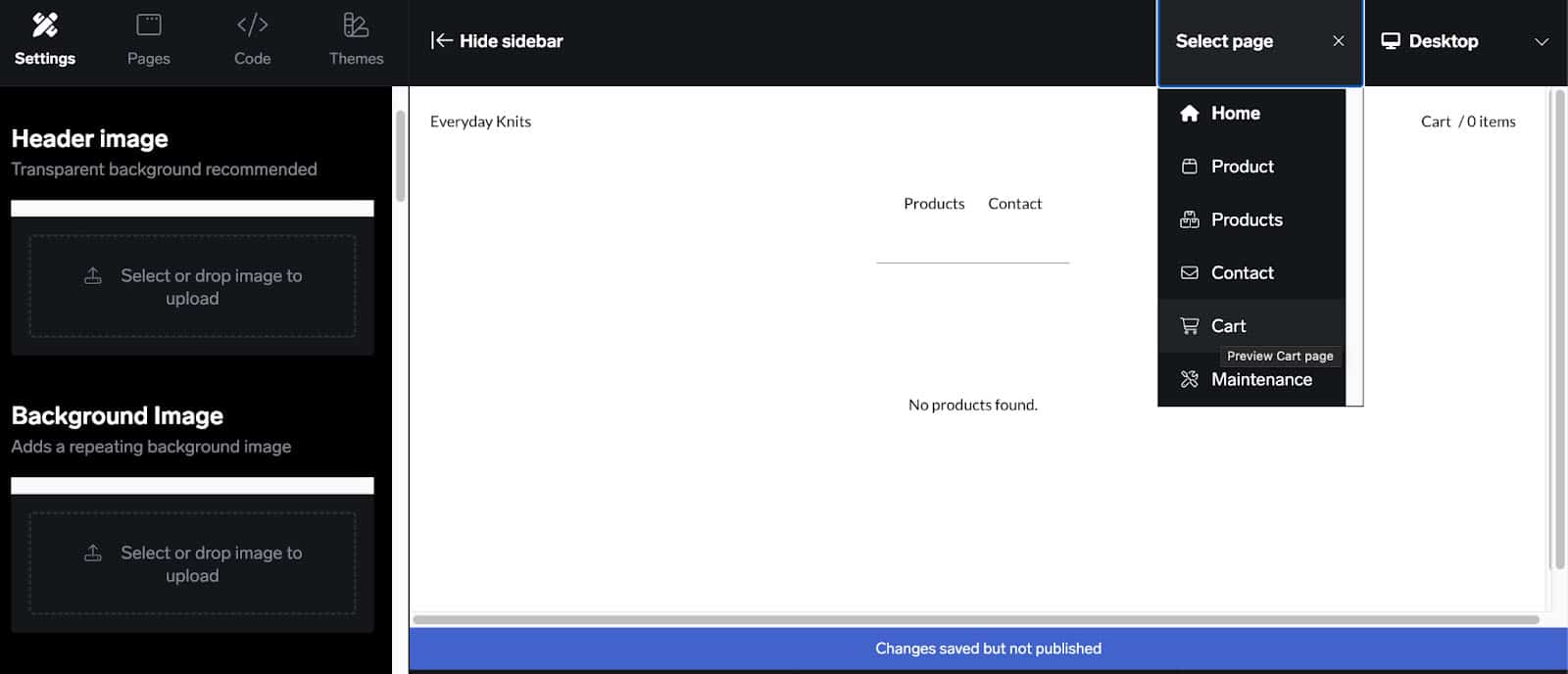
When you load Big Cartel’s site editor, you choose the page you wish to edit, then apply the changes using the sidebar to the left. All changes get reflected in the preview pane to the right.
You can, however, add additional pages to your website, but you are limited to working with a WYSIWYG editor.
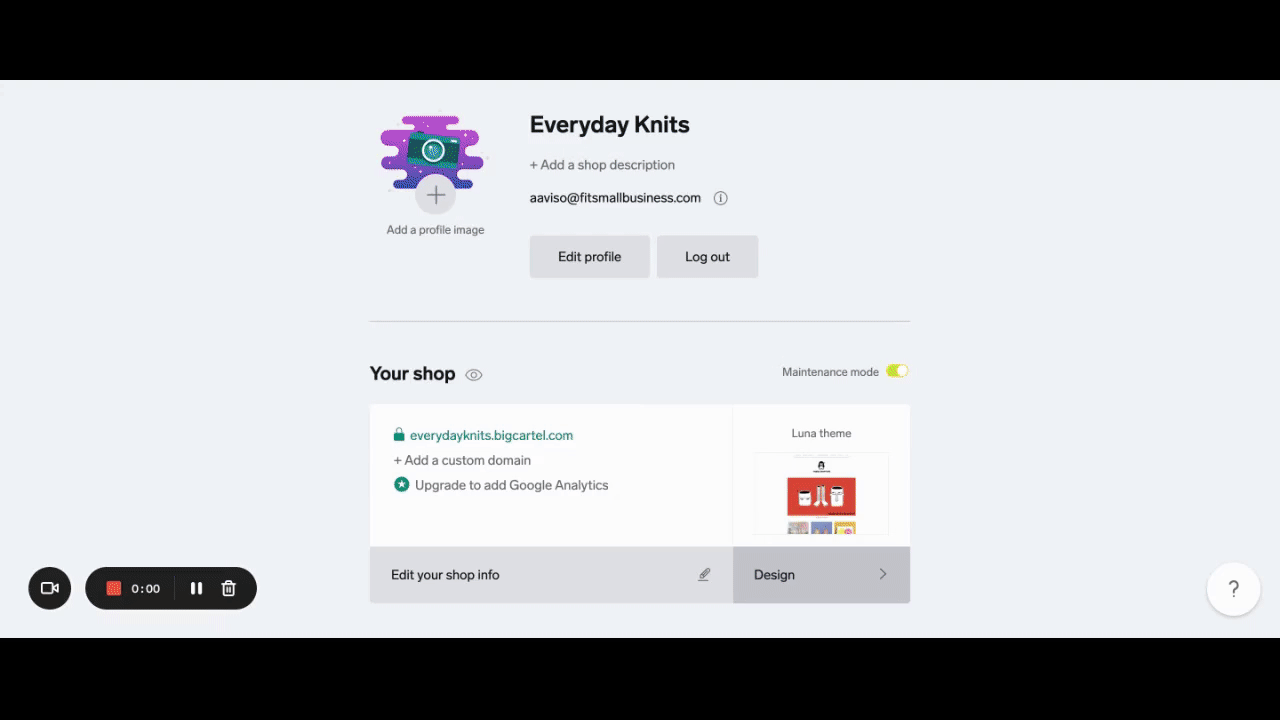
Choose your store theme, customize your fonts and colors, and upload your logo using Big Cartel’s website builder.
If you want to have some design flexibility, you need to upgrade to a paid plan and know CSS or HTML, since that’s the only way you will be able to customize your website pages. That’s pretty discouraging for a tech newbie like me, for example.
Big Cartel Website Examples
Big Cartel is best for artists or creatives looking to sell limited editions of their work and wanting to do it on a standalone site, compared to signing up with a creative marketplace such as Etsy. The brands we showcase below are perfect examples of those that have utilized Big Cartel’s standout features for their businesses.
Val Lucas, a letterpress printer from Maryland, started her Big Cartel store because she wanted to be in control of her online store. She shared that setup was quick and easy.
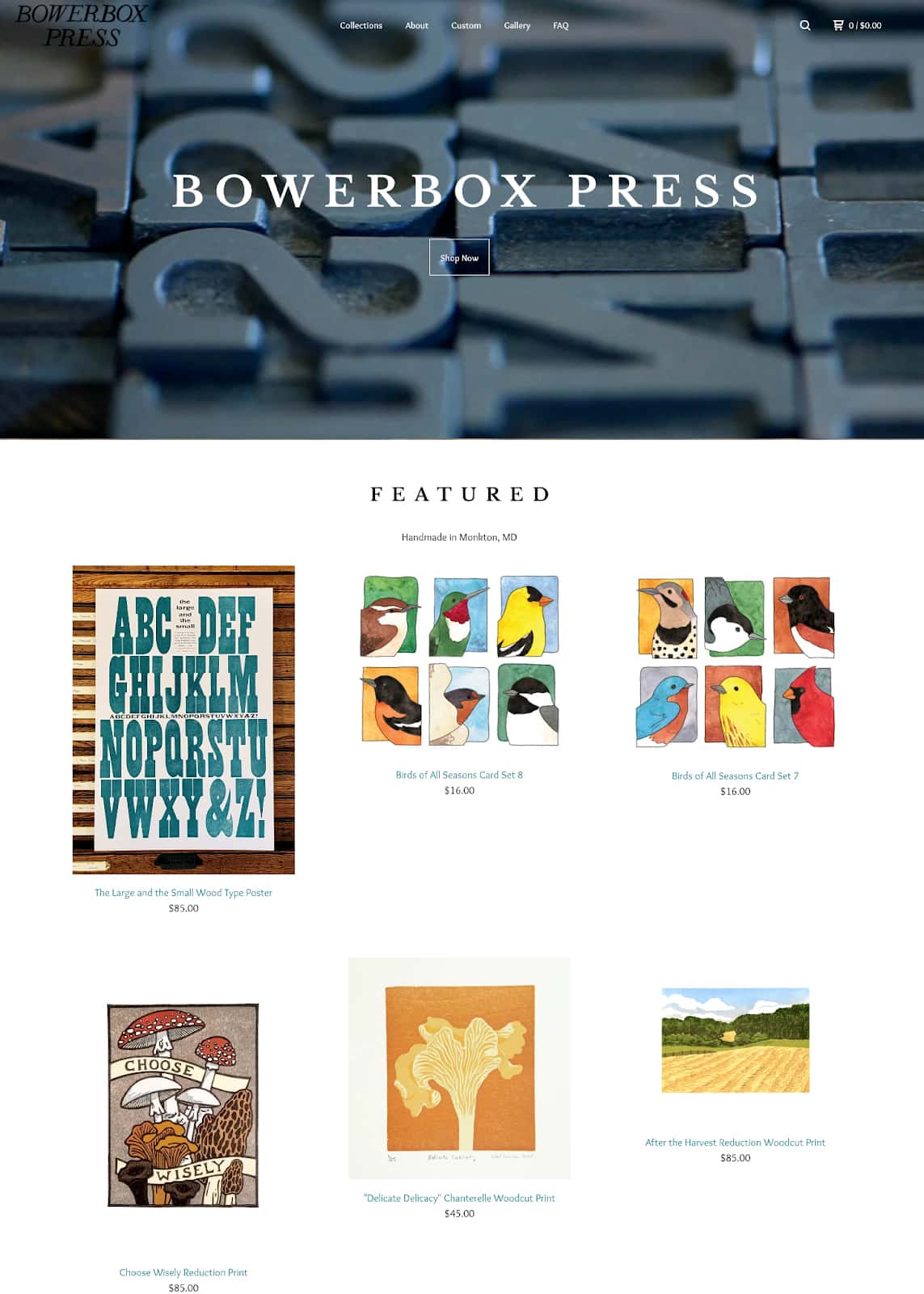
Big Cartel’s Neat website theme was Val’s personal choice because of its nice and clean look.
Multidisciplinary artist Jo Peel chose to build her store in Big Cartel because of its ease of use. She wanted a platform with a website template that lets the products speak for themselves, and she found that in Big Cartel’s Luna theme.
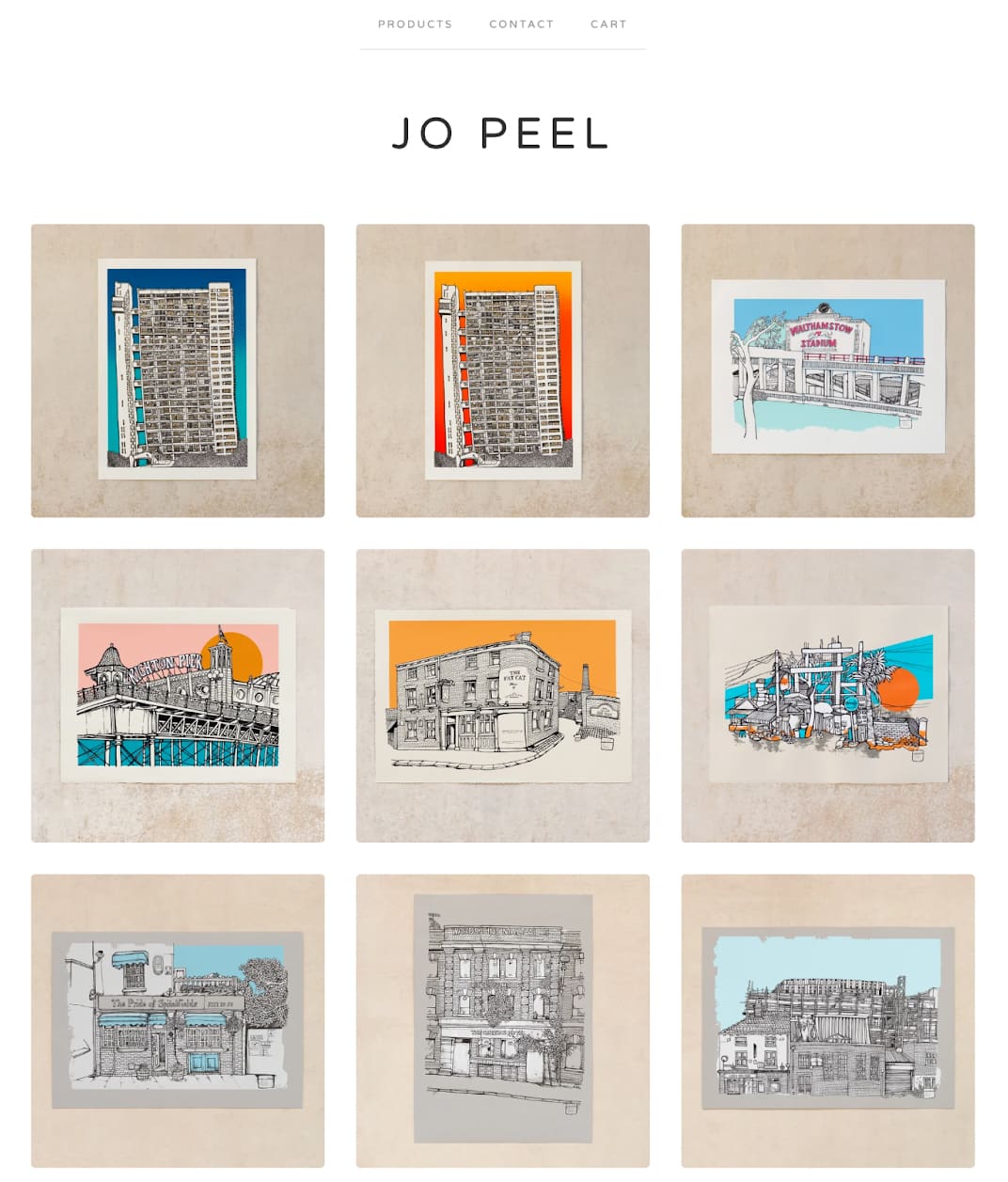
Jo went with this particular website theme because it’s mobile-friendly and easy to navigate.
Joanna Gonzales left her TV job to launch a children’s clothing brand inspired by her three children and their surroundings. She said she chose to build her online shop with Big Cartel because of its easy-to-use platform, good customer support and fast response time, and affordable prices.
Like Jo, Joanna went with Big Cartel’s Luna theme because she wants websites that highlight and put products at the forefront.
Integrations
Big Cartel’s available extensions are limited. The most notable integrations are with Mailchimp, Instagram, and Zapier, allowing for some flexibility in expanding your integrations.
As you can see, Big Cartel’s feature set is elementary and limited. While this may be a drawback for some small business owners, Big Cartel has been very clear about its target audience and has found a steady customer base in the arts and crafts community, with many examples of artpreneurs moving from their Etsy stores to open a solo store in Big Cartel.
SEO & Blogging
SEO is one area where Big Cartel needs to improve a lot. I wasn’t expecting a lot, given the platform’s basic approach to online selling. However, I was surprised to learn that I am unable to set meta descriptions or customize page URLs. Meta descriptions are the page or product descriptions that are typically displayed under titles in search results.
Note, though, that I was able to customize product URLs. However, this also isn’t a simple task to accomplish because you can’t redirect product URLs. So, if you decide to rename a product URL, a redirect from your product to the homepage is automatically created. This shouldn’t be hard to do, as redirecting URLs is easily done with other ecommerce platforms I have used.
I advise you to think of your page names and product titles thoroughly before creating your Big Cartel store to prevent any frustrations that can happen when you need to edit them.
Big Cartel also doesn’t come with built-in blogging tools, which is a shame since they are targeting artists who can thrive and market their products with content such as blog posts, videos, and images. There is an available integration for it but it would require CSS knowledge, so I didn’t bother testing it. I assume this will be the case for many creators and sellers who do not have coding knowledge.
Security & Compliance
Big Cartel is a shared hosting platform, so you don’t have to worry about security as it comes with a free SSL certificate. However, it’s interesting to note that Big Cartel is not Payment Card Industry (PCI)-compliant. This isn’t a big problem per se, as you can still rely on your chosen payment provider’s security and compliance. But most shared hosting ecommerce providers like Shopify and BigCommerce are PCI-compliant.
You can read through Big Cartel’s Merchant User Agreement to know more.
Related:
- PCI Compliance for Small Business: What You Need To Know
- Ecommerce Payment Security: 10 Small Business Best Practices
Mobile App
Big Cartel has a mobile app to help you manage your store. It is available on iOS and Android. The app allows you to manage products, create discount codes, set up in-person payments with Stripe, and issue customer receipts.
App users seem to be very satisfied with the app in iOS as it earned a high score of 4.8 out 5 stars based on almost 7,000 reviews. Android user reviews are pale in comparison, earning a 3.4 out of 5 stars based on just a little over 120 reviews.
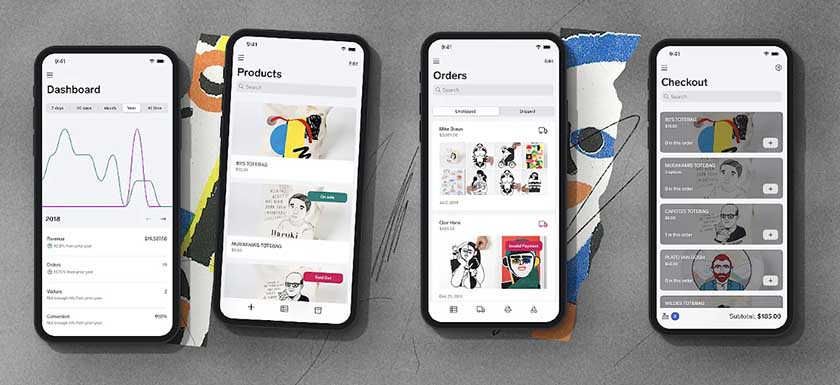
(Source: Big Cartel)
Big Cartel Sales & Product Features
My Expert Take
I gave Big Cartel’s sales and product features a score of 2.75 out of 5, mainly because of limitations. Most of the lack of or limitations are usually offered in other ecommerce platforms’ entry-level plans.
To illustrate my point, Big Cartel allows for in-person selling, but you’d need to go through Stripe. You are also limited to Instagram for social selling, whereas it is usual to add both Facebook and Instagram as social shops to an online store because they are under the umbrella of Meta anyway.
You also have a product limit even on the highest tier and need a paid integration to sell digital downloads. You don’t have the ability to generate SKUs and are limited to 150 product options and three variants per option. There is no abandoned cart saver feature, even on the highest plan.
I want to highlight the lack of or limitation on these features because compared to other ecommerce platforms, these capabilities are offered even on their entry subscription plans. (Take Shopify, for example, which offers unlimited products, and an abandoned cart saver feature on its basic plan at $39/month).
Product Management
Since Big Cartel’s free plan doesn’t allow for more than five physical products, don’t expect to need to set up many product details. You can upload a product with a single photo, put a description, classify it by category, set up product options, and set pricing, shipping, and tax fees. The ability to track inventory is available only on a paid plan.
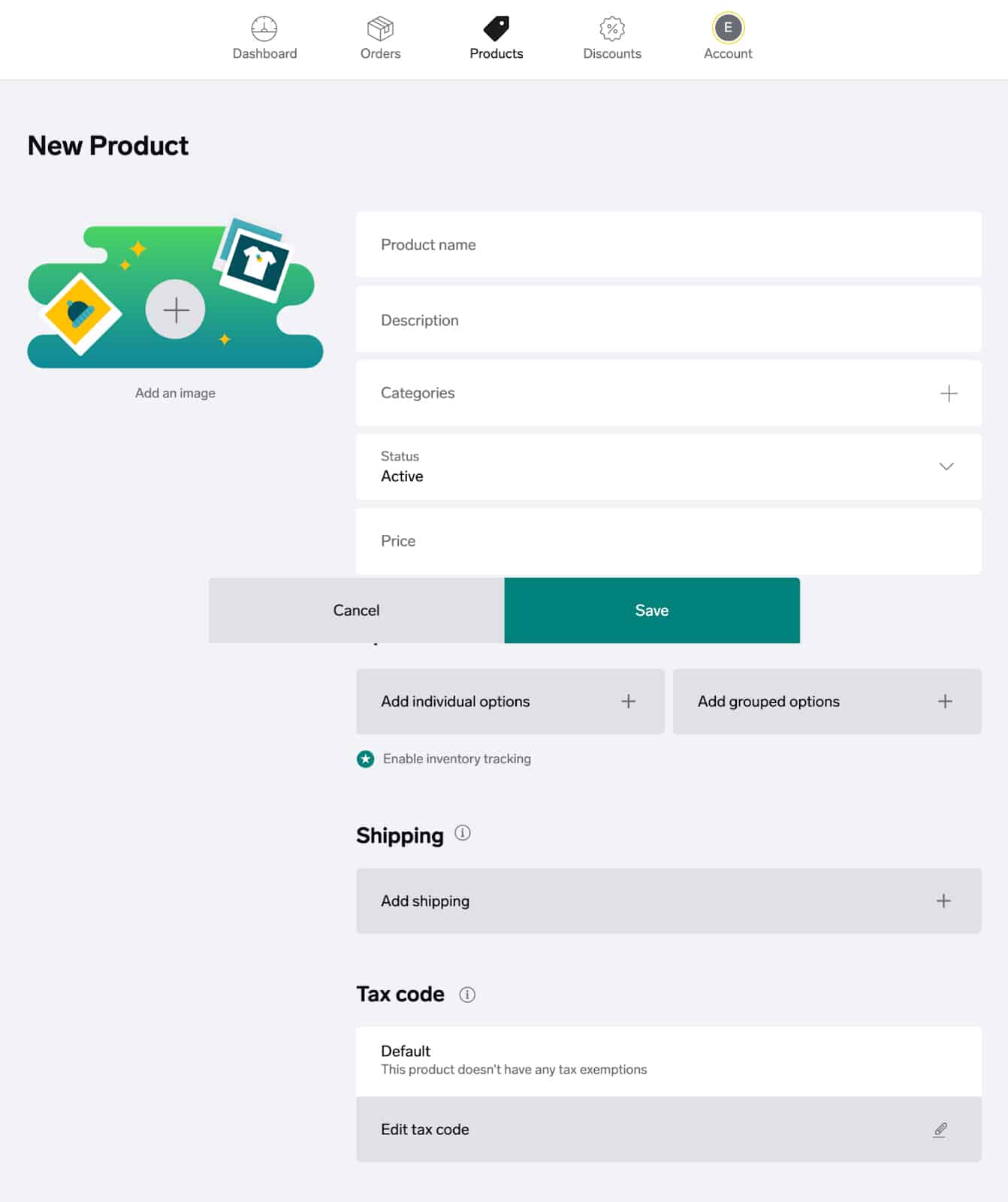
You can add new products to your store and set up these details.
One thing to remember when it comes to naming products is that once Big Cartel has created a URL for your product, you can no longer edit it.
TIP: If you are moving products from Etsy, Squarespace, and Shopify, go with Big Cartel’s product import feature to bulk import products using a CSV file.
Big Cartel allows you to set up product options such as size, color, and material for your listings. If you intend to have multiple options per product, you can set up a product group options feature. You can set up to three options and create 150 different product options per product listing.

To set up product options, go to Products, add or edit a product listing, scroll down to the Options area, and click Add option. Set up the option’s name (such as size) and type in your choices (such as small, medium, and large). Click Save.
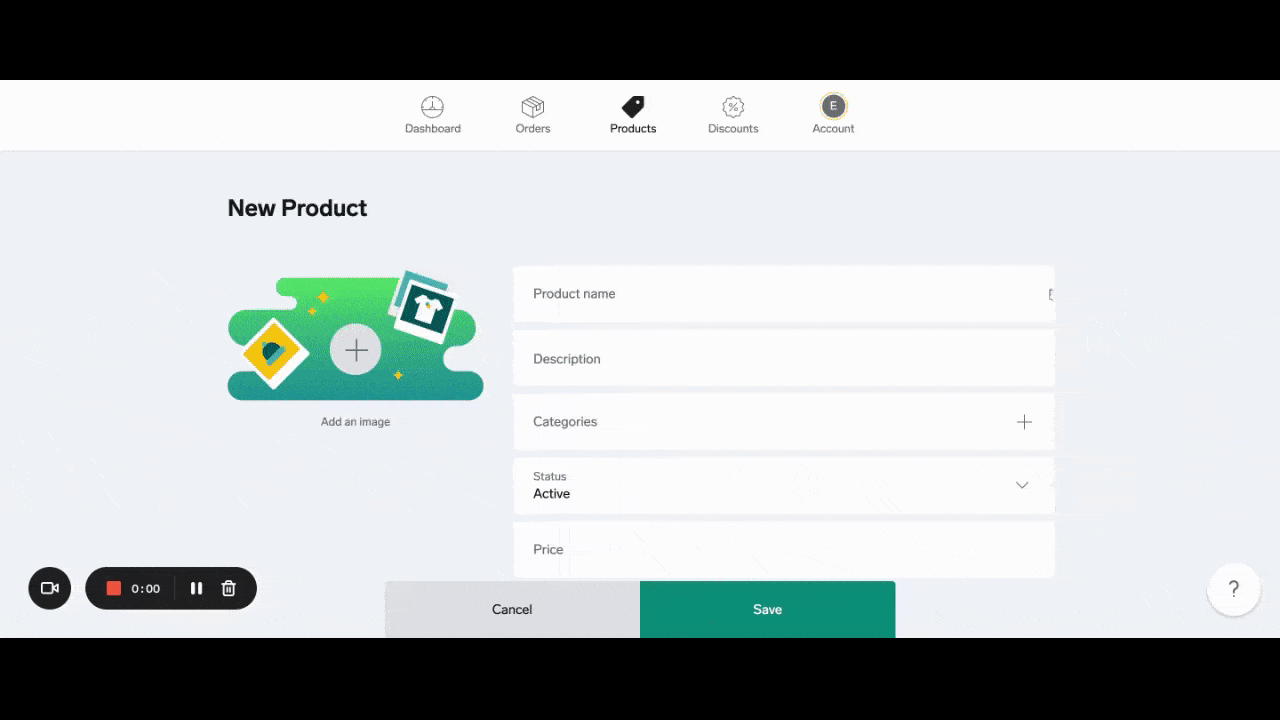
Setting up grouped options in Big Cartel is straightforward.
Setting categories isn’t as intuitive as Shopify and Squarespace. To set up categories, you need to go to a product page, click on Categories, and add one. There are no smart tags that can help you quickly organize products in categories, but this makes sense if you only have limited products to sell.
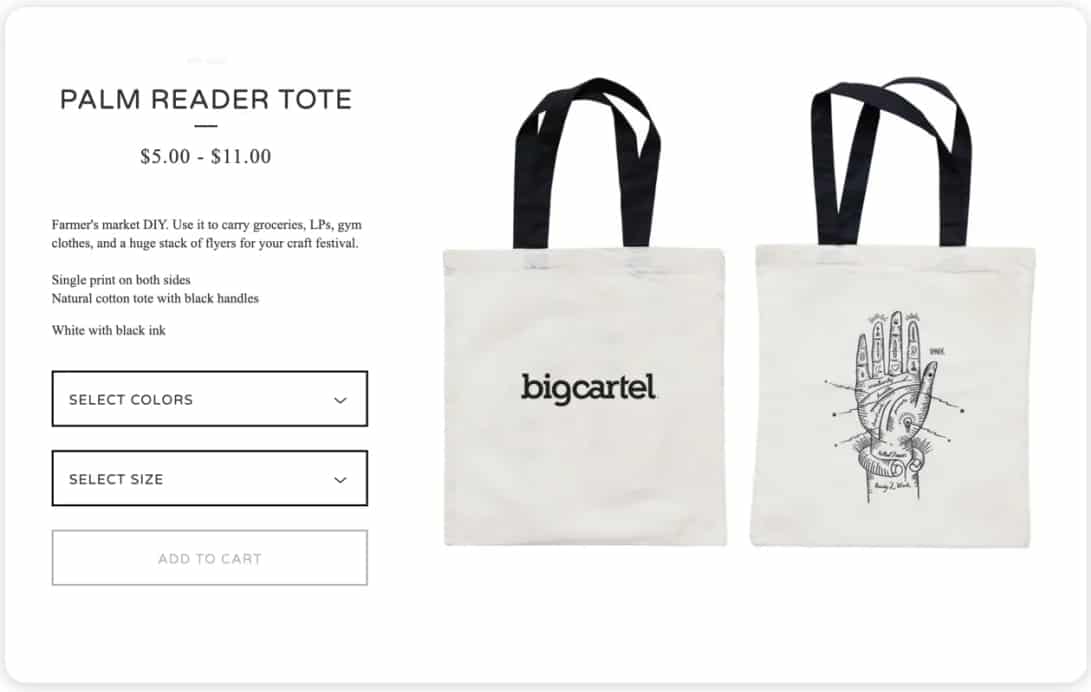
An example of a product listing with grouped product options (Source: Big Cartel)
Inventory Management
You don’t have access to inventory tracking unless you upgrade to a paid plan, which I wasn’t able to do. However, based on what I have read and watched from Big Cartel’s Help Center, you can enable inventory tracking on your Accounts page.
Turn inventory tracking inside your Big Cartel Accounts page. (Source: Big Cartel)
Once turned on, you can see your numbers turn red when an item’s sold out and turn yellow when stock is below 25%. Products also automatically get tagged sold out once inventory runs out. To update your inventory, you need to go to individual product pages and update stock numbers from there.
Shipping Tools
You can set up shipping methods from your product listing page. You can set up your country of origin and specify standalone or combined order rates.
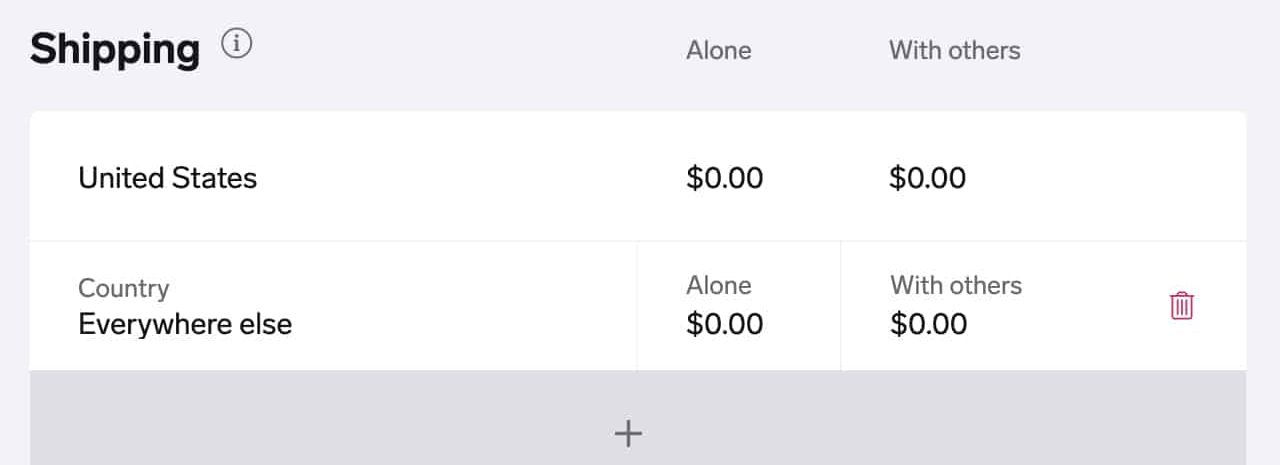
Set up shipping rates manually from the product listings page in your Big Cartel account.
Shipping profiles are added to your dashboard and are currently in Beta. You can add specific default shipping options, so you don’t need to set it up individually in your product listings.
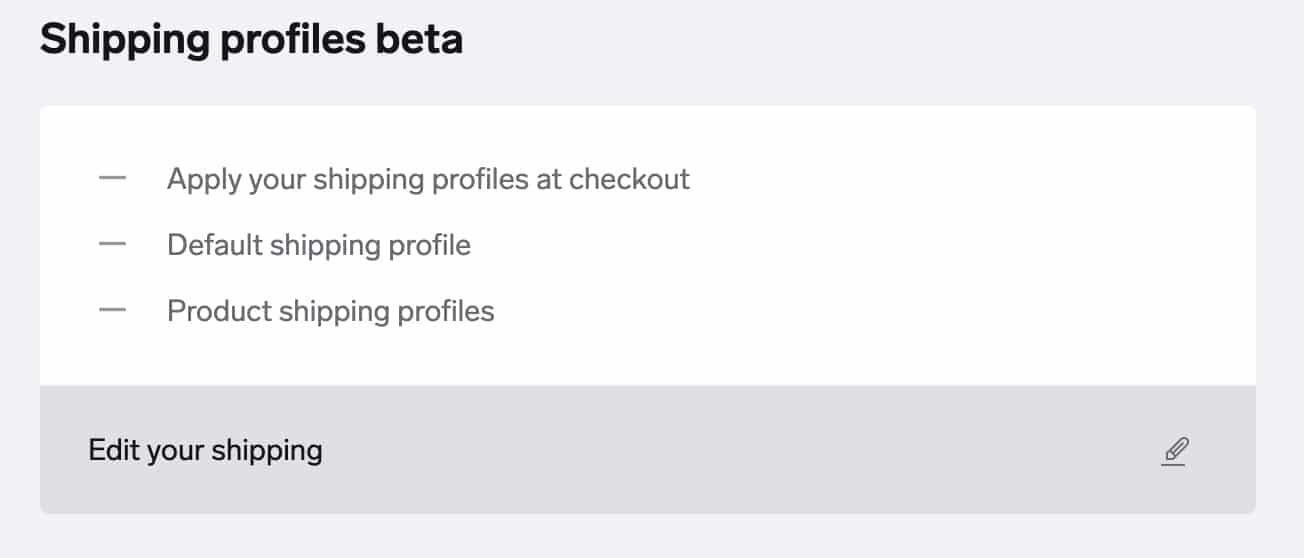
To add shipping profiles, click on your Account icon on your dashboard’s upper right-hand corner. Scroll down to see the Shipping profiles area.
Dropshipping
Dropshipping is available in Big Cartel via integrations with Printful and The Art of Where. Both providers let you upload your work, which is then printed on their stock products that you can sell from your Big Cartel store. You don’t have to take care of anything but making sales, as manufacturing and delivery are done by them.
Related:
- What Is Dropshipping & How Does it Work in 2023?
- How to Start a Dropshipping Business in 10 Steps (2023)
- Dropshipping vs Order Fulfillment: Which Method Is Better?
Email Marketing
Big Cartel doesn’t have built-in email marketing functionality but you can integrate Mailchimp or use Zapier to connect to your preferred provider. Shopify, our top recommended ecommerce platform, gives its users this feature for free, while other providers like Wix and Squarespace offer it at reasonable prices.
Sales Tax Calculation
If you are a seller based in the US, Big Cartel has the Sales Tax Autopilot which applies the correct tax rate per state automatically.
Related: The Ultimate Guide to Ecommerce Sales Tax
Big Cartel Ease of Use
My Expert Take
Big Cartel is as easy as you can expect from a simple platform. You can create your store in as little as a day and all questions you might have can be answered in their Help Center.
- Intuitive dashboard
- Straightforward onboarding process with design wizard
- Friendly onboarding process
- Help Center/FAQ
- Training videos
- Email customer support (Monday to Friday from 9 a.m. to 6 p.m. Eastern time)
Big Cartel has a very user-friendly onboarding process. When I was setting up a demo store, it gave me helpful prompts, reminders, and suggestions all throughout the process. Being guided through the setup tasks makes it beginner-friendly and easy to use.
Setting up a store with Big Cartel is straightforward, even simpler than the setup process of Square Online (which topped our list of the best free ecommerce platforms when it comes to ease of use). Of course, the simplicity of Big Cartel’s setup process is due to the platform’s feature limits.
I was able to complete a demo store setup in just a few hours, given that I was only able to upload very few products. I tried connecting PayPal as the payment processor, and that was done quickly, too.
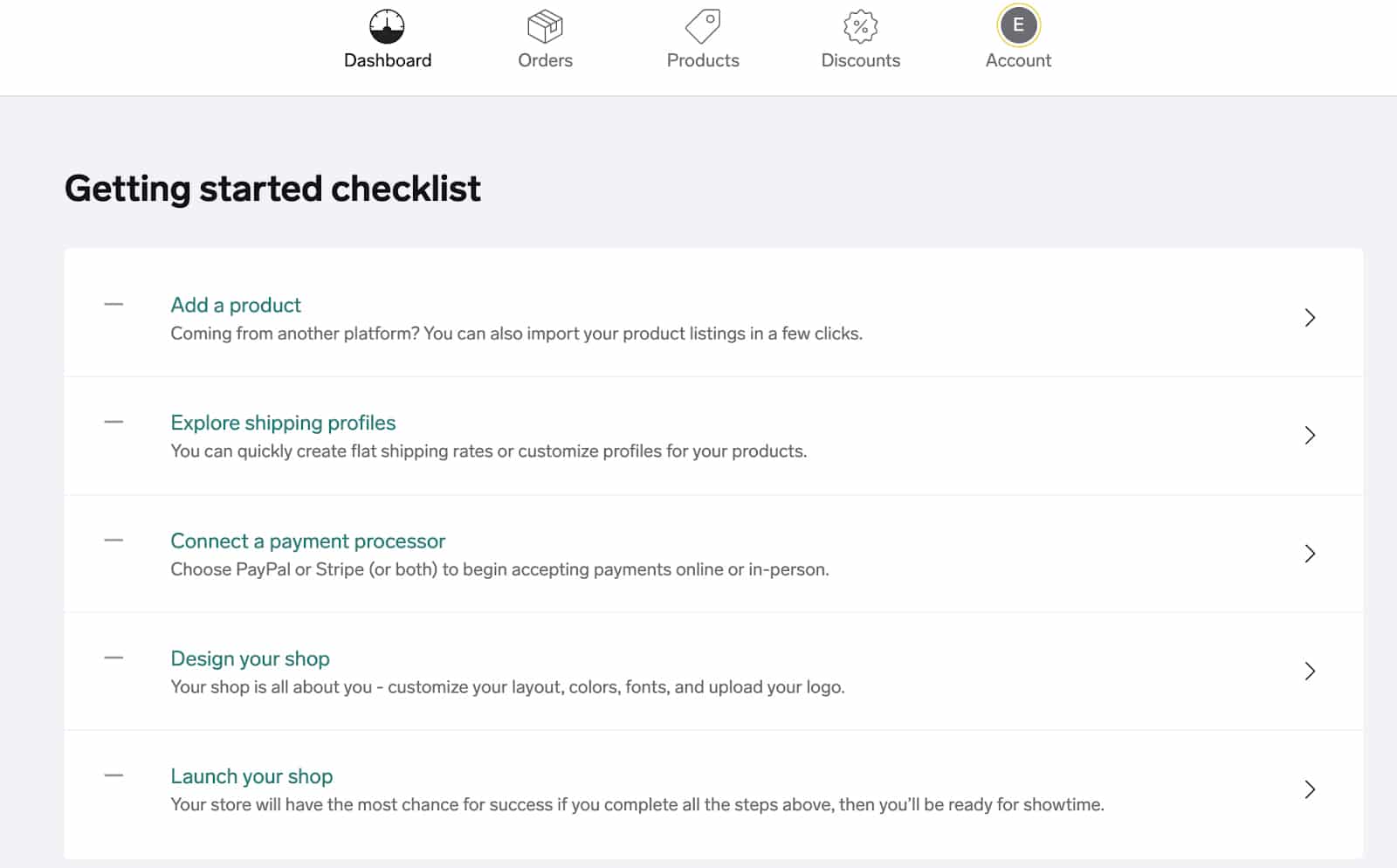
You get a checklist when you see your Big Cartel dashboard after sign-up.
When it comes to support, Big Cartel doesn’t provide phone or live chat options. However, email response time is fast, and its support team is pretty active in the provider’s social media accounts, especially Twitter.
You would not need to reach out to support that much, in my opinion, given the platform’s simple features. Its help center is already pretty comprehensive, and prompts were easily seen all throughout the setup process.
Big Cartel Expert Score
My Expert Take
Big Cartel definitely knows its target customer and its limitations are not a big deal for them. This is why Big Cartel lands on our list of best ecommerce platforms—they are niched and they make sure to deliver all the features their target customer needs.
Here, we considered any standout features, the overall value Big Cartel provides, user reviews,
and feedback based on our own experience testing the platform.
While Big Cartel’s scores in my evaluation show it isn’t fit for serious ecommerce businesses that have a goal of scaling, it certainly fits Big Cartel’s target customers—creatives and artists who offer limited product runs and need a full standalone online store to showcase their work and accept orders.
Big Cartel was originally designed for artists, so it really works best for businesses with a small inventory. If you only need to sell a few products at a time, Big Cartel is tough to beat. Its templates are stylish and modern and, unlike many competitors, don’t include pesky ads.
Methodology—How We Evaluated Big Cartel
I evaluated Big Cartel by testing the platform and building a demo store. Then, I graded it against the criteria we use to evaluate the best ecommerce platforms. I looked at affordability along with essential ecommerce features every online store should have, such as intuitive site builder tools and scalable sales and product features. Ease of use, customer support, and the overall value each system offers were also considered.
Click through the tabs below for a more detailed breakdown of evaluation criteria:
15% of Overall Score
20% of Overall Score
We considered the available templates, customization options, and overall flexibility of the website builder. We also reviewed the quantity and quality of third-party extensions compatible with the software and whether it includes a free domain and SSL certificate, unlimited storage, and built-in SEO tools and site analytics.
25% of Overall Score
20% of Overall Score
Because online stores operate 24/7, we prioritized platforms that offer 24/7 customer support and have multiple customer touchpoints, such as phone, email, and chat. We also awarded points to easy solutions to set up or have guided prompts and a comprehensive help center.
20% of Overall Score
Meet the Experts
The following retail and ecommerce experts contributed to this article:
 | Meaghan Brophy is a resident retail and ecommerce expert at Fit Small Business with over 10 years of retail experience and 7 years of experience delivering actionable content to independent retailers. She has spent the last 4+ years at Fit Small Business testing retail and ecommerce software. |
 | Agatha Aviso is Fit Small Business’ resident ecommerce software expert. She has spent years testing and evaluating different platforms and building online stores. |
Frequently Asked Questions (FAQs)
Click through the questions below to get answers to some frequently asked Big Cartel review questions.
Big Cartel is ideal for small entrepreneurs. It is primarily built with artists and creatives in mind, as its templates are aesthetic and products take center stage. It is not recommended for online businesses that need robust marketing and product management tools.
Yes, Big Cartel offers a free plan that allows you to sell up to five products with one photo per item. It also lets you connect a custom domain, such as www.yourstore.com. If you don’t own a custom domain, you can use a Big Cartel subdomain, like yourstore.BigCartel.com, for free.
Yes, Big Cartel lets you dropship products with a handful of apps. However, popular platforms like AliExpress and Alibaba are not built-in apps you can integrate with. Since the platform was built for artists, dropshipping apps like Printful and The Art of Where are only available.
Bottom Line
For growing businesses and experienced web developers, Big Cartel’s simplicity may be a cause for frustration. Since Big Cartel is designed for creatives and isn’t built with scaling ecommerce businesses in mind, it is everything you can imagine when it comes to ease of use. So, if you need to sell only a few products at a time, Big Cartel is a logical choice. However, if you need a platform that can accommodate your growth in the long run, you might want to look at Shopify or BigCommerce.
User Review References:
